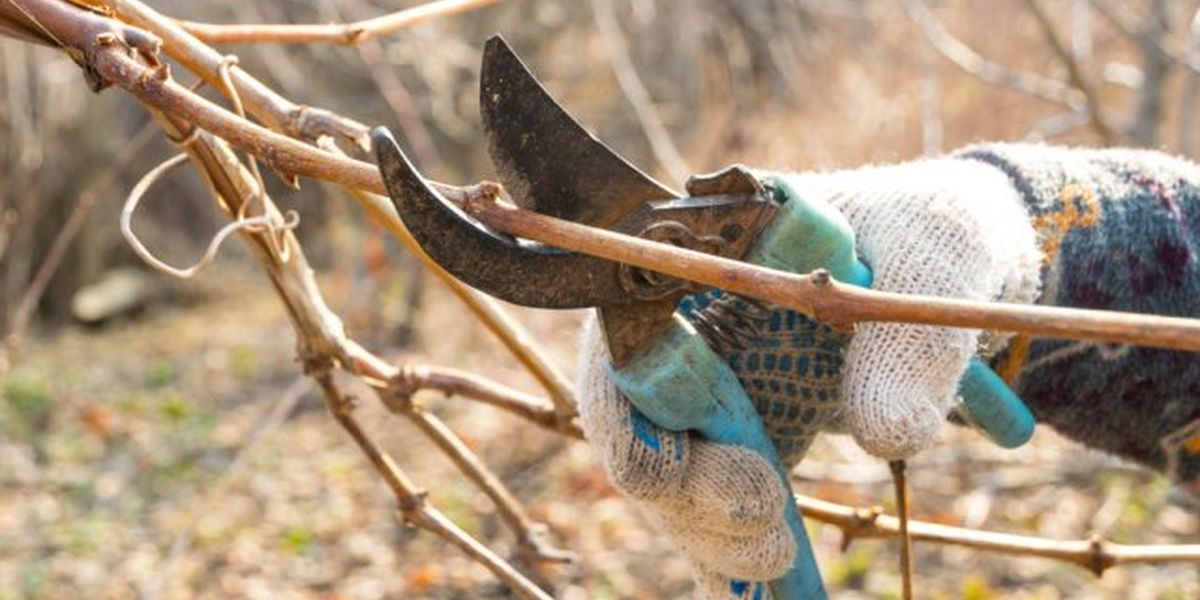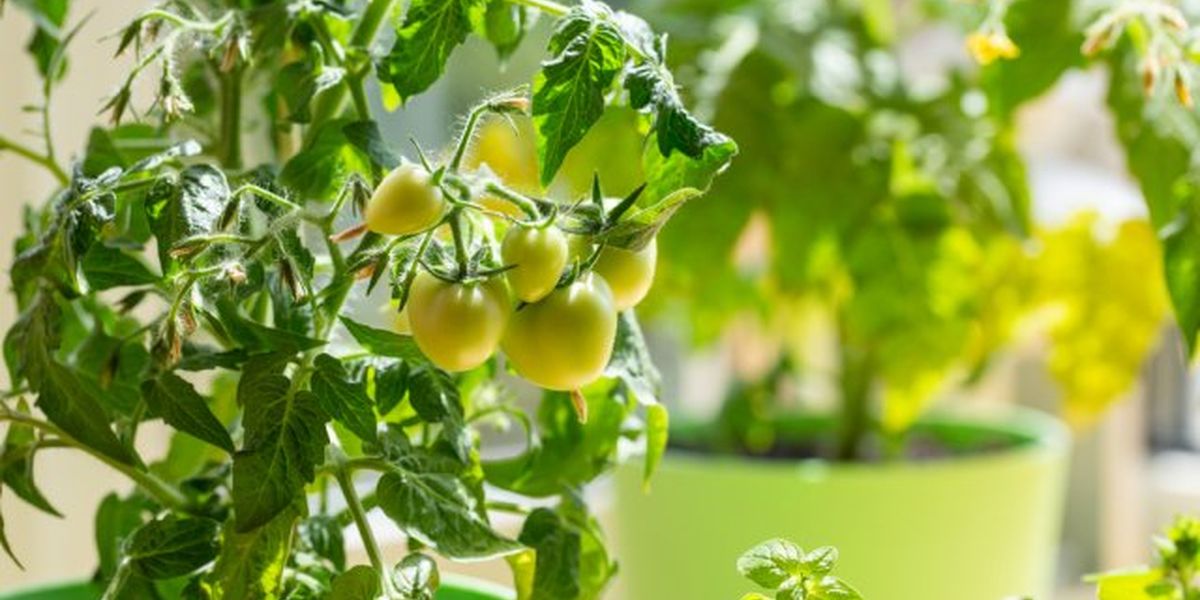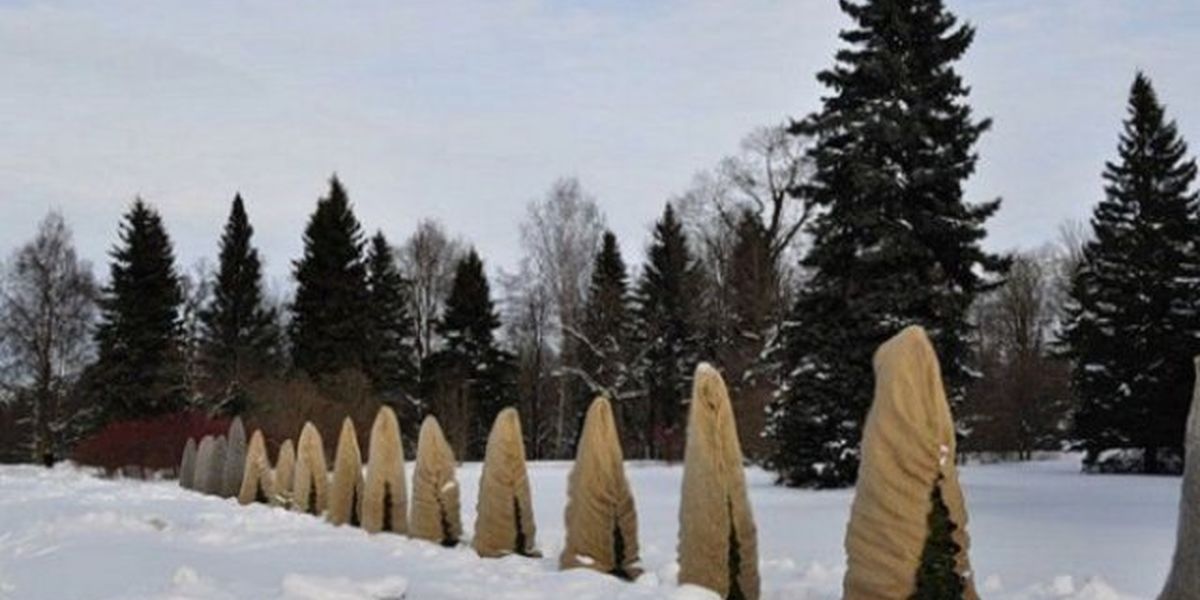The days have become shorter, and visits to the country house have become very rare. Work in the garden, vegetable garden and flower garden has mostly moved to another level - home. But even at this time, some active things for the summer resident still remain.
10 most important things to do in the garden in December

1. Take care of the cuttings
Before severe frosts come, prepare cuttings of pome and stone fruits for spring grafting. For this, choose shoots 40-45 cm long with well-developed buds. Sort the cuttings, collecting each variety in a separate bunch, and label them. Then put them in a box with wet sand and take them to the basement, cellar, or put them in the refrigerator. Periodically inspect the shoots sent for storage. If mold is found on them, immediately wash them with clean water, and in very advanced cases - with a light pink solution of potassium permanganate. Then dip the cuttings in a 5% solution of ferrous sulfate for a few seconds, then dry them and return them to the storage location. Repeat the inspection regularly.
2. Protect the garden from rodents
Even before the snow falls, cover the strawberries with branches of spruce, maple, linden, aspen, currant or poplar. Since rodents do not like the smells of these plants, they will not be able to encroach on garden strawberries. For the same purpose, after the snow falls, trample it with your feet around the trunks of fruit trees. Other methods of protection are a casing and poisoned baits.
3. Start stratifying stone fruits
At the beginning of the month, for faster emergence of spring shoots, it is time to stratify the pits of cherries and plums. First, the seeds are soaked in water for 2-3 days, then the pits are mixed with wet sand or sphagnum and sent to a room with a temperature of 3-5 ° C. After the pits crack, the containers are buried in the snow. The stratification period for plums is 4-5 months, for cherries - 5-6 months. And some stone fruits can actually be grown on a windowsill.
4. Control the pruning of bushes and trees
During the relatively warm December, it is not too late to prune winter-hardy berry crops - barberry, viburnum, gooseberry, currant and rose hips. If broken branches appear on trees and bushes, they should also be cut off immediately, since infections penetrate the plants through them. Be sure to apply putty to the cut sites.
5. Find a useful use for snow
The branches of trees and bushes often break under the weight of snow. Therefore, after heavy snowfall (especially wet snow), it is necessary to shake it off the plants in a timely manner. And in order for the snow to be beneficial, on the eve of frost, pour a 40-50 cm layer of it into the trunk circles of young trees and bushes. At the same time, there is no need to compact the snow, since in this case it does not retain heat well.
6. Destroy wintering pests on trees
Collect from the trees and destroy the nests of wintering insects - hawthorn moths, winter moths, leafhoppers and various types of ticks.
7. Inspect the vineyard
Inspect the trellises in the vineyard. First, clean the wire from the remains of the vine, then, if necessary, repair the trellises or even stretch new wire instead. Make sure that the bushes are securely covered. If this is not the case, create additional thermal insulation for the plants by throwing some of the fallen snow onto the vineyard.
8. Repair equipment and inventory
Inspect garden equipment and tools. Throw away broken equipment and inventory, repair the rest.
9. Hang bird feeders in the garden
In order to attract live helpers to your garden, "feed" them. If you did not have time to create feeders in November, then it is not too late to do this in the first month of winter. You can create excellent feeders from plastic bottles, tin cans, tetra packs and other improvised means. By the way, in the absence of urgent matters, it is worth thinking about a new birdhouse.
10. Cut down an old or sick tree
December is the best time to cut down broken trees. There is more time, and there is minimal danger to the garden if an old or damaged tree falls. And in the spring, when the ground thaws, you can uproot the remaining stump, if you have no other plans for it. If you have never cut down trees and you have doubts, call a professional.
10 most important things to do in the garden in December

1. Make a planting plan
A detailed map of the garden will help you follow crop rotation rules next year. At the same time, start creating markers for seedlings and adult plants. You can also "sketch" the planting plan by hand.
2. Sow a garden on the windowsill
If you do this at the beginning of December, you will be able to grow individual crops just in time for the New Year. You can grow cucumbers, tomatoes, and peppers on the windowsill all winter.
3. Calculate and buy additional seeds
Based on the planned planting area, estimate whether you have enough seeds prepared in advance
4. Check the condition of the harvest and preserves
From time to time, visit the cellar to check the harvest of various fruits and preserves. Immediately destroy spoiled products, carefully inspect the rest, repeating the "inspection" at least after two weeks.
5. Collect food scraps
This advice, of course, looks funny, but nevertheless, many food scraps will be more useful in the country than in the landfill. For example, banana peels, tea leaves and coffee grounds, potato peelings. And there is nothing to say about onion peels and eggshells: these are generally the cheapest useful fertilizers for your soil.
6. Pay attention to the compost pit
If the frost has not yet had time to break out, then you have time to replenish the compost with food scraps and spoiled canned goods.
Immediately after this, shovel the contents of the pit, pour it with water or slurry and insulate. For this, use branches and a layer of soil about 50 cm.
7. Stock up on containers for seedlings
Plastic cups, as well as cut bottles made of this material are great for this purpose. Small flower pots, cardboard juice boxes and even egg trays – all of the above containers, depending on the size of the future sprouts, can be used for planting them. There are also more original options for containers for growing seedlings.
8. Sprout the seeds
Another way to get a whole set of vitamins for the body, which it so needs in the cold season. Place the seeds of different crops in containers, choosing a separate container for each of the future plants. Carefully wash and fill the seeds with water so that it covers them slightly, and leave for a while: vegetable seeds - for five hours, cereal seeds - for 12 hours. Then place the seed material on saucers with a damp cloth and wait until the sprouts reach a height of 4-5 cm. After that, they can be cut and included in your diet.
9. Inspect the greenhouses
Regularly shake off the snow from the polycarbonate greenhouse to avoid the roof collapsing and deformation of the entire structure. And sometimes such a structure needs to be strengthened at all. It is not difficult to do: make wooden supports in the shape of the letter T, wrap the upper crossbar with fabric and dig them into the greenhouse so that the roof rests on them. For a standard 4-meter greenhouse, 4-6 such supports are enough, in larger structures it is better to increase the number.
10. Take care of greenhouse vegetables
In a heated winter greenhouse, you can already sow early ripening cucumbers, which will ideally end up on your table by the February holidays. Parsley, dill and leaf lettuce will fit well between the rows of cucumber plantings. But tomatoes, peppers and eggplants will definitely need additional lighting for good growth in the cold season.
10 most important things to do in a flower garden in December

1. Prepare boxes and soil for seedlings
Clean the wooden boxes in which the seedlings will grow from dirt, scald and rinse with a dark burgundy solution of potassium permanganate. Mix the soil ingredients prepared in the fall. Turf soil, lowland peat and mature compost and mix them in a ratio of 1:1:0.5. Disinfect the resulting soil by thoroughly baking it in the oven or keeping it in the cold for several days.
2. Sow slow-growing flowers for seedlings
It's time to sow flower crops that have a period of 130-200 days before flowering. These are hybrid verbena, rugose calceolaria, lobelia erinus, purple coneflower, begonia, Shabo pink, eustoma, gentian, lavender, pelargonium, primrose, autumn helenium and others. The seeds of some of them need preliminary stratification, which means that the sooner you start, the more chances you have to see a flowerbed shining with bright colors already at the beginning of summer.
3. Engage in forcing bulbous plants
If you carry out the appropriate activities at the very beginning of the month, then you can still have time to get flowering plants by the spring holidays. Keep the hyacinth bulbs at a temperature of 24 ° C in a dark place for a week, and then store them in the light. As soon as the plants bloom, reduce the temperature to 15-18 ° C. Forcing of daffodils is carried out in a bright room at a temperature of 12-15 ° C, gradually increasing it to 18 ° C, and with the beginning of flowering - decreasing to 15 ° C.
4. Inspect the planting material
Gladiolus bulbs, dahlia and begonia tubers, calla rhizomes - all planting material previously sent to storage in the basement, systematically inspect, cutting off rotten and damaged areas. Sprinkle the cut areas with crushed charcoal - wood or activated. Immediately throw away spoiled planting material. Cut off sprouts that suddenly appear on dahlia tubers.
5. Prepare spruce branches
If the winter suddenly turns out to be frosty and windy, but snowless, this type of shelter will help protect the heat-loving inhabitants of your flower garden from the effects of insidious weather. Remember that all the coniferous material you collect should not have any signs of disease (rust, various types of rot) or traces of pests (bark beetles, sawflies, etc.).
6. Tie up the trunks
The trunks of young ornamental plants also need protection from freezing. This can be easily provided using the already mentioned spruce branches or thick fabric. At the same time, this will protect your plantings from attacks by ubiquitous hares, mice, and other animals with sharp teeth.
7. Distribute the snow correctly
Shake off excess snow from ornamental plants: if there is a lot of it or it is wet, it may well damage their shoots. It is better to hill up perennial plants (astilbe, irises, peonies, phloxes) with the resulting surplus. Ideally, the layer of snow above them should be 30-40 cm. However, make sure that a crust does not form on the surface: its appearance will contribute to the rotting of the plants. To prevent this from happening, carefully destroy the hard crust.
8. Take care of conifers
Before the snow falls, tie the fragile representatives of this group with rope or netting. At the same time, try to ensure that the tying is not too tight, otherwise the plant may rot from the inside. Strengthen young conifers grown on a standard with stretchers. Plants that are not very well rooted, with the onset of persistent frosts, are recommended to be covered with burlap or spunbond.
9. Protect bulbous plants from rodents
Colchicums, crocuses, lilies, daffodils, bluebells and other cold-resistant bulbous plants that overwinter in the soil can easily become prey for sharp-toothed pests in winter. To prevent this from happening, place poison baits around the perimeter of the plantings.
10. Provide additional lighting for orchids
Many of these southern indoor plants paradoxically bloom in December. In order to achieve lush and long flowering at a time when daylight hours are short, provide additional lighting for the flowers. The daylight hours these plants need are at least 12 hours. But watering and fertilizing should be reduced.
There are also some other, less troublesome things that will help you not to forget about your dacha during December in particular, and the whole winter in general.
